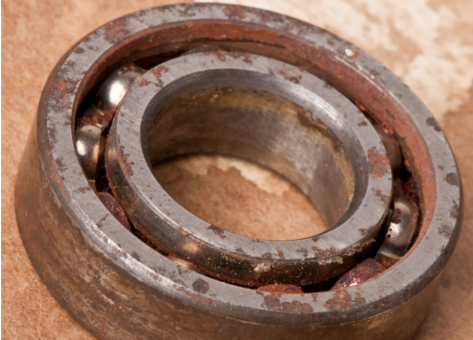Welcome to Sino Bearings web
24x7 HOTLINE:+86-28-81454188

 TECHNOLOGY
TECHNOLOGYDid you know that external environmental factors and improper mounting are the most common causes of bearing failure? The bearing type, application and situation are all unique, so you must carefully consider a number of factors before coming to a conclusion about what’s causing your bearings to fail.

In order to help you solve your bearing troubles, we created this three-part blog series to discuss the major factors that can lead to bearing failure. Hopefully, in addition to completing preventive bearing maintenance, these will help you get the most life out of your bearings or understand why your bearings may be failing.
Common Factors That Lead to Bearing Failure
1) Contamination
Causes: Dirt, abrasive grit, link, dust, steel chips from contaminated work areas, dirty hands or tools, or foreign matter in lubricants or cleaning solutions.
What to look for: Denting of rolling elements and raceways, causing vibration
How to fix it: Filter the lubricant, clean work areas, tools, fixtures, and hands to reduce the risk of contamination.
2) Improper Mounting
Causes: Improper installation of the mounting. In most instances, bearings should be mounted with a press fit on the rotating ring.
What to look for: These are some of the prevalent conditions that can cause denting, wear, cracked rings, high operating temperature, early fatigue, and premature failure of bearings (among many others).
-Mounting bearings on shafts by applying pressure or blows to the outer race
-Mounting bearings into a housing by pressing on the inner ring
-Loose shaft fit
-Loose housing fit
-Excessive tight fits
-Out of round housings
-Poor finish on the bearing seat
How to fix it: Install mountings properly, and provide training to ensure all employees understand the difference between a properly and improperly installed mounting.
3) Misalignment
Causes: Commonly caused by bent shafts, out-of-square shaft shoulders, out-of-square spacers, out-of-square clamping nuts or improper installation due to loose fits. Misalignment can result in overheating and separator failure.
What to look for: A wear path not parallel to raceway edges on the raceway of the non-rotating ring.
How to fix it: Inspect shafts and housings for runout of shoulders and bearing seats, use precision grade locknuts.
4) False Brinelling
Causes: The rapid movement of the balls in the raceway while the equipment is idle. The quickly moving elements remove the lubrication, and lack of rotation in the bearing does not allow fresh lubricant to return to the spot.
What to look for: Linear wear marks in axial direction at the rolling element pitch, no raised edges as opposed to marks due to incorrect mounting.
How to fix it: Eliminate or absorb external vibration, and use lubricants containing anti-wear additives.
Found these helpful? Keep an eye out for part two in our next post. Or, if you have questions feel free to contact us
Contact
Ritbearing
15151 Prater Drive
Covington, GA. 30014
Phone: 1-800-431-1980
contact form
KMK BEARINGS